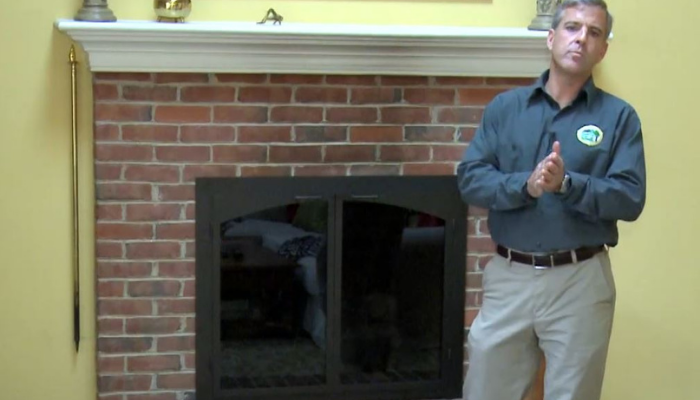During the cold winter months, having a fireplace provides a warm comfortable heating solution. While they can create an idealistic home setting, they can also create a dangerous environment. Not keeping up with fireplace maintenance can easily turn your warm comfortable spot into a fire danger putting you and your whole family at risk. Before the cold winter months are upon you, leaving you longing for a warm kindling fire, make sure your fireplace and chimney are in proper working condition.
Chimney Cleaning
It is typically recommended to have your chimney cleaned twice per year. This number will vary depending on how much you actually use the chimney. In colder environments where the chimney is used more often, cleanings should happen more frequently. Cleaning your chimney every fall ensures proper ventilation. This reduces the risk of fires and carbon monoxide poisoning and ensures that there are no animals stuck in the chimney.
Chimney Caps
If your chimney is not already equipped with one, then consider installing a chimney cap. A chimney cap prevents things from falling down into your chimney. Things such as snow, animals, debris and leaves can easily pile up in your chimney without a chimney cap. Chimney caps also help prevent a downdraft from gusting into the area your chimney is supposed to be heating. Chimney caps that are installed with screen meshes keep animals out of your chimney while protecting the roof from embers or sparks caused by your chimney.
Ash Removal
Remove old ash from your fireplace and dispose of it in a fireproof container. While removing the ash, look up the chimney flue. The creosote and black soot should also be removed. This can be done with a spray or powder that is specially formulated to remove these from the chimney flue. This helps reduce the risk of fires and carbon monoxide poisoning.
Visually Inspect
Visually inspect your chimney for signs of wear and tear such as cracks or loose joints. These need to be replaced or repaired prior to using your fireplace. It is important to trust a professional to repair these issues rather than attempt to repair them yourself. Firebrick is different from normal brick and mortar. Regular brick and mortar cannot stand up the high heat your chimney produces and could cause more expensive problems to repair.
Inspect Tree Limbs
Tree limbs should be trimmed so they are not near the chimney. Pruning tree limbs ensures that they do not pose a fire danger by lingering dangerously close to the top of your chimney. Tree limbs also restrict the draft of the chimney. Without proper draft, your chimney cap can become damaged and not work properly. Trim trees so there are no loose or hanging limbs near your chimney.
Carbon Monoxide and Smoke Detectors
Carbon monoxide and smoke detectors should be a priority for anyone with a fireplace or wood burning stove in their home. No matter what type of fireplace you have, nor how much fireplace maintenance it receives, the safety of all occupants of the house depends on a carbon monoxide or smoke detector. While the chances of carbon monoxide poisoning are low, it is better to be safe rather than sorry. Carbon monoxide is an odorless gas, and detectors are the only way to keep your household safe.
When it comes to your home and family, fireplace maintenance should be your first priority. Keeping a fireplace in good condition takes some work before creating that first warm fire. Ensuring that your fireplace is in proper working condition allows your family to enjoy the warm fire during cold winter months.




Leave a reply